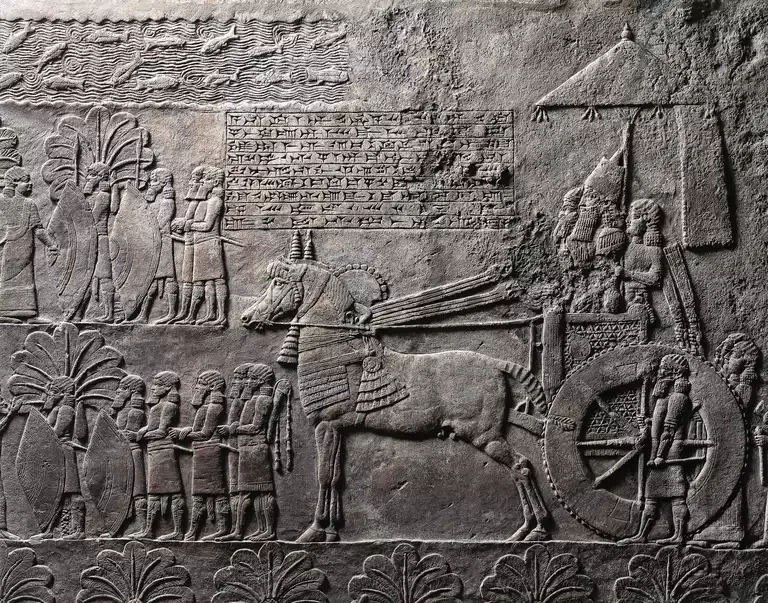The Library of Ashurbanipal was established by the great king Ashurbanipal as a library to be used by his palace and ruled by his successors. The library contained mostly documents and literary pieces from the ancient time periods. It has also been stated that Ashurbanipal wished to make his library the largest in the world. This library is situated in present-day Aggani in Northern Iraq.
The Royal Library of Ashurbanipal, also called as the "Nitta" ("The treasury of the gods") was a compilation of more than thirty thousand clay tablets and other documents containing ancient texts from the seventh century BC, featuring texts in many different languages. Some of its important collections included the epic of Gilgamesh, composed probably in ancient Iran. The library is considered to be one of the Seven Wonders of the Ancient World.
The main sections of the library are: a treasury, a medicinal store, a library, a store for writing materials, and a museum. The library was managed by the King, who appointed an accountant, a scribe, and several attendants. The chief scribe, called nasi (scribe) worked on the royal library. Other scribes were Xuthos and Chemosh.
The library of Ashurbanipal had no money whatever; it received money only from grain sales and from the sale of oxen, so it had to buy grain regularly. Grain was sold to the members of the library. When the library received grain supplies, it used the money to purchase oxen for its use. Grain was not only used to feed the oxen, but also to cover the expenses of the library. Thus, the library was fed by money obtained from the community. Most scholars believe that The Library of Ashurbanipal was founded around the third century B.C., although this is largely debated by modern day scholars.
One of the most important characteristics of the libraries of Ashurbanipal was its ivory writing boards. The boards were painted with images of cuneiform tablets, and thus, gave the library the name of "Cyrus". Many scholars also believe that the library was based on the Phoenician culture of southern Egypt. Many artifacts found in the ruins of Nineveh indicate that the library used a Phoenician writing system. The term "Cyrus" is sometimes also used to refer to "The Book of the Two Cities", a book written in Egyptian characters.
One of the most impressive features of the library of Ashurbanipal was its collection of the sacred books of the Egyptians. This collection numbered about two hundred and fifty scrolls. However, much of the literature from the time of Ashurbanipal's reign is missing. In addition to the sacred texts, the library contained a wide range of books on music, law, medicine, grammar, astronomy, geography, astrology, and the history of ancient Babylon. The library possessed scrolls written in both Akkadian and Babylonian.
As rule was consolidated by the Second Intermediate Periods, the library was taken over by the Seleucid dynasty. Under this rule, the library and its belongings were relocated to Nippur, in what is now Iraq. The library was destroyed in the 6th Century B.C. Another important point of importance for scholars is that during the sack of Nineveh, some of the sacred texts were saved, and they have been translated into Coptic and Greek today.
The library contained a great variety of ancient tablets that contained omens, such as the Tablet of Horus, the Horoscope of Osiris, the Medallist's Tablet, and the Horoscope of Apsara. Many tablets from the time of Alexander the Great's period also survive. The Library has been a center of study and research by many historians, archeologists, ecologists, and astrologists over the years. Today, it serves as a museum and research center dedicated to ancient history. Many visitors come for the opportunity to see artifacts and ancient books.
References
https://blog.britishmuseum.org/a-library-fit-for-a-king/



